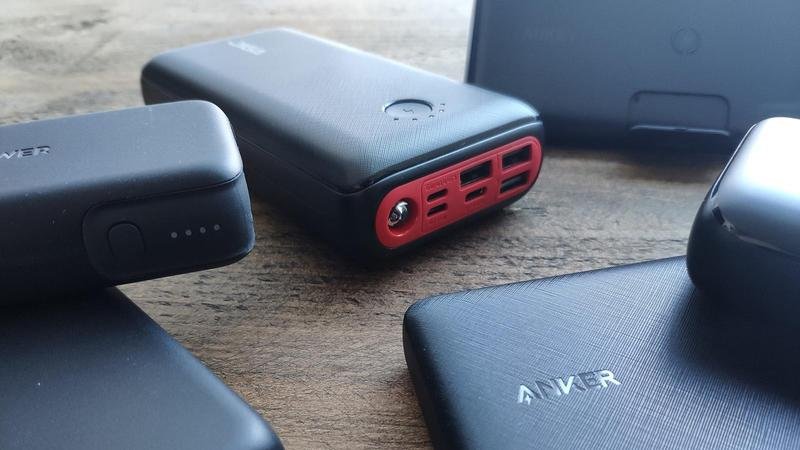Not all power banks are the same. As in all veins of consumer tech, there are cheap ones and pricey ones, and sometimes you’re paying simply for a name. But there’s so much more to choosing a portable charger than finding the cheapest version you can.
We want the fastest charging speeds – for recharging the bank itself and for charging a connected phone – and to know at a glance that a portable charger is going to get us through the day with juice to spare, even share. But we don’t want it weighing down our pockets.
We want multiple ports for charging additional gadgets, and more efficient use of power outlets to free up sockets. We don’t want to carry multiple charging cables – in fact we don’t want to carry any cables at all.
Design and capacity are most important, sure, but what about wireless- or even solar charging? What about an LCD screen? Waterproofing? Don’t you want the coolest and most convenient power bank you can get for your money without paying over the odds?
These days, it’s even possible to rent power banks as and when you need them (check out ChargedUp). Mind blown. To ensure you get the very best power bank for your needs, whatever that looks like, read on below our chart.
Do note that we have not reviewed every single power bank out there – as with many tech accessories, power banks are often sold by unfamiliar brands, and you’ll also find the same models rebranded and sold by multiple distributors. Sometimes it isn’t even clear who makes the device. Aside from those from big names such as Anker, power banks also tend to go on- and offsale pretty quickly.
We strongly recommend you read our buying advice below the chart for advice on what to look for when it comes to options not featured here.
Best Power Bank Reviews
Charmast 10,400mAh Power Bank – Best Power Bank with LCD
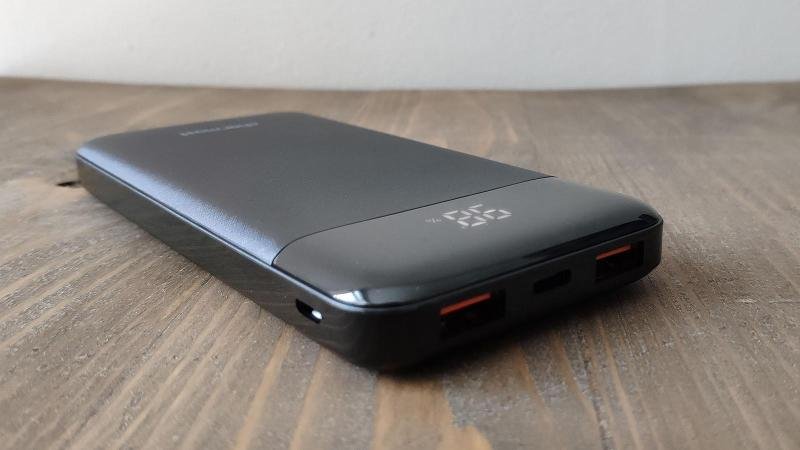
- Pros
- Great value
- LCD
- Multiple inputs/outputs
- Power Delivery
- Cons
- Larger than many 10K models
There was a time when power banks with LCDs were rather expensive, and as prices started to come down they began to flood the market. But, today, this Charmast is the only model with an LCD in our round-up.
That screen is super-handy for knowing exactly how much power remains inside the bank. When you’re dealing with relatively large amounts of power, it’s significantly more useful than trying to guess whether one or two lit LEDs worth of juice is going to get you through the day.
The power bank also has three outputs, which will come in handy if you have multiple devices to charge. There are two full-size USBs, plus a USB-C PD port that can act as both input and output, and all three support 18W Quick Charge – although only one at a time.
On the side is an additional Quick Charge 2.0-compatible Micro-USB, which can also be used for charging the bank. It will charge in about 3.5 hours with a Quick Charge/PD adapter, but about 5.5 hours with a standard 10W charger.
The down side of the design is that it’s a bit bigger than many of the super-slim, similar-capacity models on the market. This Charmast is roughly the same width as a phone, but a little shorter and a fair bit chunkier. It weighs in at 228g, which you may decide is better suited to a bag than your pocket.
Charmast supplies a soft mesh carry case and a short USB-A to USB-C cable in the box, a nice touch.
JIGA 30,000mAh Power Bank – Most Versatile Power Bank
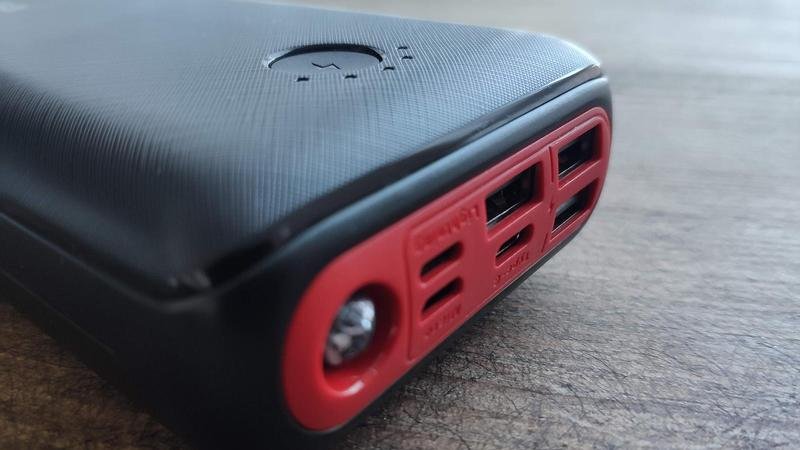
- Pros
- Huge capacity
- Ideal for Android and iPhone users
- Cons
- Plasticky design
- No Power Delivery
JIGA is a new name to us in terms of power bank tech, but its 30,000mAh power bank is interesting for a number of reasons – and not least the huge capacity, which will be some comfort on trips away from mains power.
While it’s something of a throwback to power banks from a couple of years back, with its built-in LED flash (certainly useful for camping trips) and durable but plasticky design, it also takes us back to the days where you didn’t have to sacrifice ports for portability.
It’s surprisingly small for such a high-capacity bank, but it’s more bag- rather than pocket-friendly.
The JIGA has USB-C, Micro-USB and Lightning inputs, allowing you to fill its battery using whatever cable you have to hand. It’s a shame that the USB-C port doesn’t also work as an output, but there are three full-size USB-A outputs, each rated at 10.5W.
This isn’t the Power Delivery speeds we’re becoming increasingly familiar with today, but it’s plenty fast for charging a phone (or multiple phones).
If all you need is a healthy stream of power to keep topped up a number of mobile devices, this JIGA power bank will be a very handy device to have around.
Anker PowerCore Essential 20,000 PD – Best Value 20,000mAh Power Bank
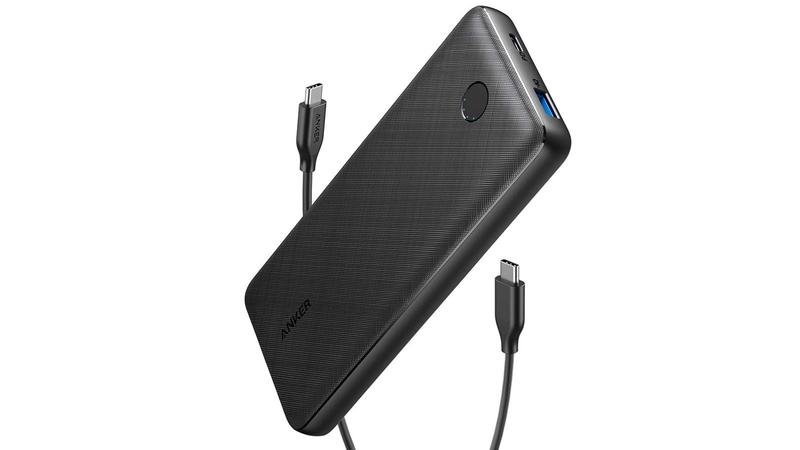
- Pros
- High capacity
- Great value
- Reliable brand
- Power Delivery
- Cons
- Won’t charge a USB-C laptop
Hailing from Anker, a respected brand in the power bank market, this 20,000mAh portable charger represents very good value at this capacity.
The 345.5g Essential is a black plastic brick, though relatively compact for the amount of power it can hold. It has a textured top surface that improves grip in the hand, as well as the overall appearance.
We’re pleased to find support for Power Delivery, but do note that it’s only up to 18W, and therefore not likely to be sufficient to charge a USB-C laptop. Still, for quick-charging a phone or tablet, this is a useful device.
A full-size USB output that uses Anker’s PowerIQ smarter charging algorithm is joined by a USB-C port that is both input and output. On top is a power button with four integrated LEDs that reveal remaining capacity, and you can use this to enter a trickle-charging mode suitable for smartwatches and earbuds.
A USB-C to USB-C cable and soft mesh carry case are provided in the box, which is a nice touch.
Anker PowerCore III 10K Wireless – Best Wireless Power Bank
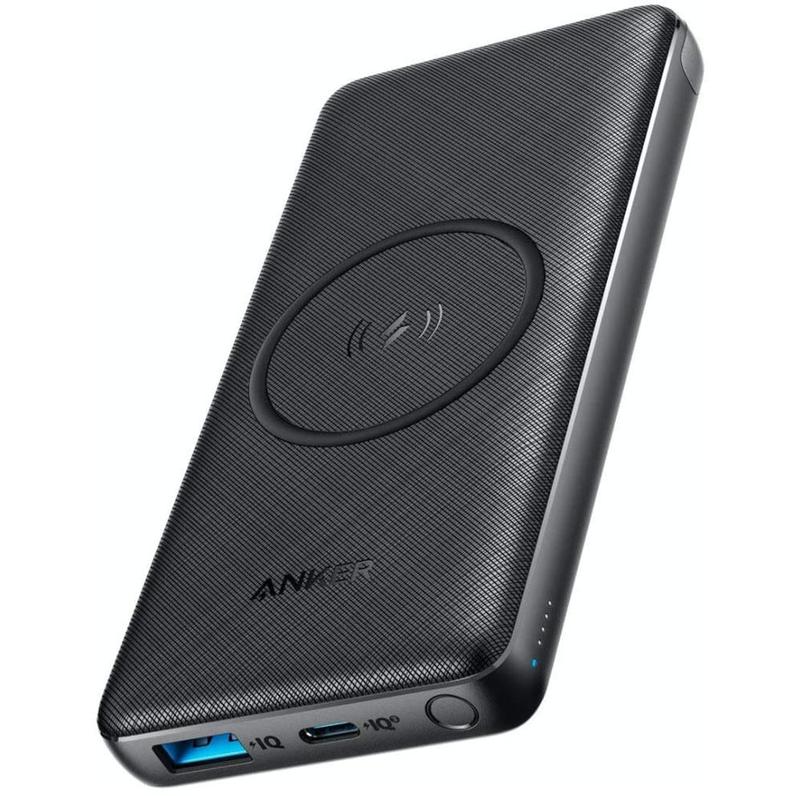
- Pros
- 10W wireless charging
- 18W wired charging
- Built-in phone stand
- Cons
- No support for MagSafe, Apple Watch or Samsung Watch
The Anker PowerCore III 10K Wireless is a Qi wireless charger with a special feature: you can use it as a portable power bank, too, which can be super handy.
You can use it at home or work plugged in, and carry it around with you for wired or wireless charging when you are away from a power socket. Because it’s wireless, there’s no need to carry a cable around with you.
As the name suggests, the PowerCore III 10K has a decent sized 10,000mAh battery, which should offer at least three charges from the power bank before it needs recharging itself.
The wireless charger is rated at 10W. Place your device on the centre of the circle. We didn’t find the placement too sensitive, as some wireless chargers can be. It’s not auto-start, though – as a power bank it requires you to push the button first.
You can also charge from the two USB-A ports at one end – at a total of 18W, so charging two or three (one wireless, two wired) devices will split that power output.
Anker PowerCore 10K Wireless – Best Budget Wireless Power Bank
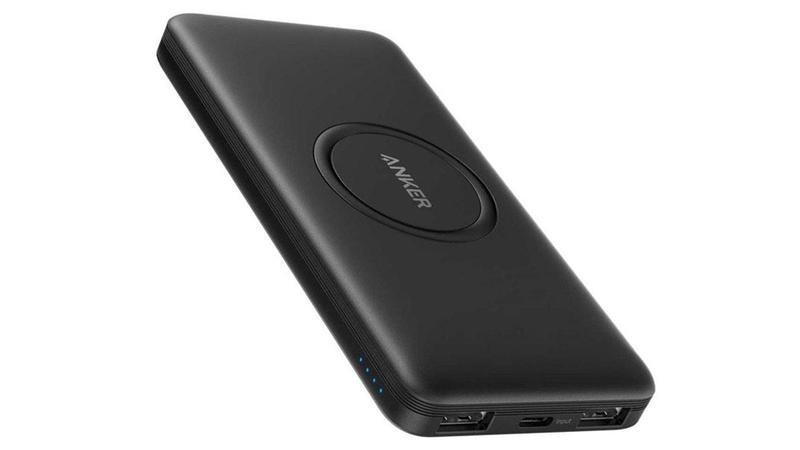
- Pros
- Good value wireless charger
- two full-size USB-A outputs
- Cons
- USB-C is input only
- Qi is only 5W
- no MagSafe support
The Anker PowerCore 10K Wireless is a Qi wireless charger just like the PowerCore III but at half the wattage and at a cheaper price.
It too has a 10,000mAh battery, offering three charges from the power bank before it needs recharging, but wireless charging is rated at 5W compared to the PowerCore III’s 10W.
If speed of charge is not a deal-breaker for you, then you’ll save some money with this model, although we prefer the faster charging PowerCore III.
Anker PowerCore Magnetic 5K – Best MagSafe Power Bank
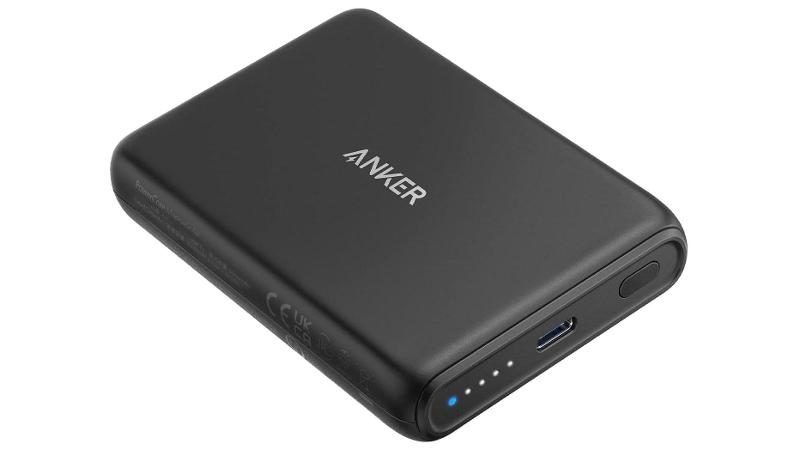
- Pros
- Made For iPhone
- Compact Design
- Well-known brand
- Cons
- Relatively low-capacity
- A bit pricey
This portable wireless charger is one of the best accessories you can get for your iPhone.
In essence, it’s a 5,000mAh palm-sized power bank that will charge your compatible iPhone simply by snapping it onto the back with MagSafe.
It works through some cases, charges over USB-C, comes in a range of colours and, even if you don’t have MagSafe, can be used to charge almost anything via cable.
A handy set of LEDs indicates how much charge the PowerCore has remaining.
Tech Charge Wireless PowerKit 5000 – Best Bundle
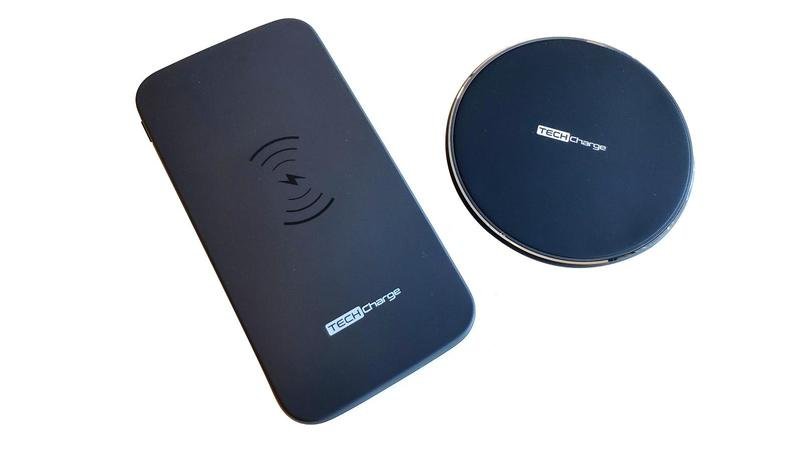
- Pros
- Wireless charging at home or away with this 2-in-1 bundle
- Cons
- Wireless bank is only 5W and 5,000mAh
- No USB-C
- No Power Delivery
Typically sold separately, you can save some money on charging accessories when you buy them as a bundle – and this Wireless PowerKit 5000 from Tech Charge offers incredible value. In the box you get a 10W wireless charging pad, a 5,000mAh power bank that can charge your mobile devices over standard USB or Qi wireless, and three cables (two Micro-USB and one Lightning).
The power bank is nicely designed, with a rectangular body and rounded corners, plus a soft-touch black casing. Despite being lightweight it’s larger than many power banks of this capacity, but necessarily so to build in the wireless charging tech and serve as a stable base for your phone when charging in this manner. You’ll also find four nubbins on the bottom to keep it steady on the desk.
We’re still not entirely convinced by wireless charging on power banks, given that most people will carry the bank in a pocket or bag (and that’s simply not going to work), but for some gadgets such as wireless earbuds and smartwatches Qi is the best way to charge them. And we admit it’s a cool feature to have.
Though not advertised as such the Tech Charge power bank appears to support passthrough charging, which means you can simultaneously recharge the power bank and a connected device, freeing up mains power outlets in your home. Not that it’s going to take an age to recharge, thanks to a 10W Micro-USB input, but note that the power bank itself does not charge wirelessly.
It is true that you will find faster and more fully featured power banks elsewhere – and cheaper, too, if you won’t benefit from the wireless functionality or separate wireless charging pad. It’s lacking, for example, Quick Charge support, USB-C and an LCD display (none of which is yet standard in the power bank market). But this Tech Charge kit offers excellent value, and it is eminently functional.
From its 5,000mAh internal battery you can expect between 3,000- and 3,500mAh to be available to your devices, at least when recharged over the standard USB port. These days that is a single charge for most phones, but with older iPhones and budget Androids you should expect to find a small amount of juice left over for emergencies.
As far as we can ascertain the Wireless PowerKit is not Apple-certified, but compatible with all current iPhones that support wireless charging, as well as all Qi-compatible wireless devices.
Moshi IonGo 5K Duo – Best Design
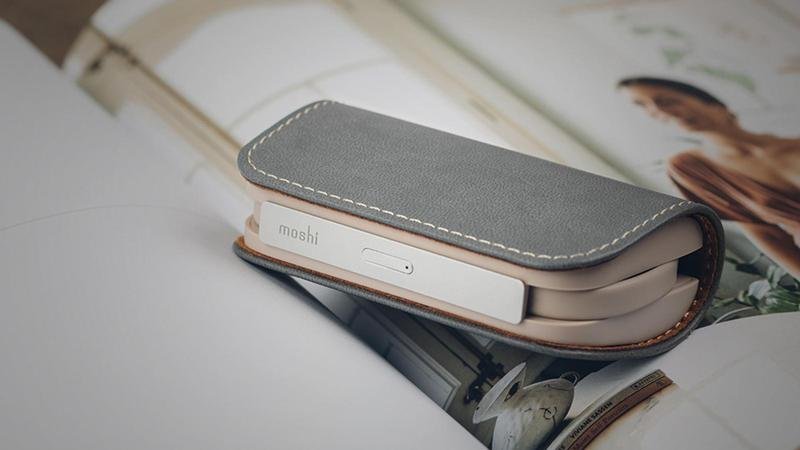
- Pros
- Gorgeous design
- Built-in USB-C and Lightning cables
- Vegan leather
- Cons
It’s expensive, but you’ll pay out for the IonGo 5K Duo from Moshi if style is as important to you as is functionality.
Almost identical in design to the IonGo 5K before it, but here with both USB-C and Lightning cables built-in (hence the name Duo), the Moshi is an undeniably cool-looking power bank that comes tucked away inside a vegan-friendly soft leather case with a magnetic clasp and an anodised aluminium faceplate.
The additional cable means it’s now suited to Android as well as iPhone users, although as before this is Made For iPhone-certified.
This is a truly premium device with a colossal 10-year warranty going a long way to account for its higher asking price. It’s also possibly the dinkiest 5,000mAh power bank we’ve seen, suggesting there are some serious high-tech components inside.
At this capacity, expect a full charge for any Android phone, and potentially two for iPhone. Moshi claims the bank will also retain that power for up to 27 months when left unused.
Charging is up to 15W over USB-C and 12W over Lightning. Use Lightning and USB-C together and you’ll see slightly slower charging speeds, with a max total output of 3.4A (17W).
You can also use the USB-C cable for recharging the bank, again up to 15W. Better still, the Moshi supports passthrough charging, allowing you to charge both it and a connected device at once, but given that there’s no separate input here that’s going to work only with iPhone.
What capacity do I need?
Power bank capacity is commonly misunderstood. You don’t need to understand…
